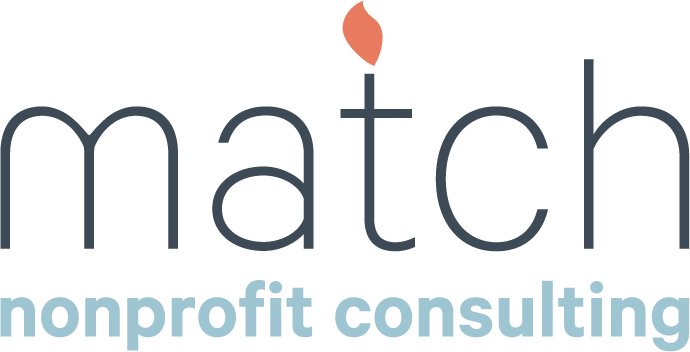For many nonprofit organizations, a successful year-end giving campaign can make or break their annual fundraising goals. According to Nonprofits Source, “30 percent of all annual giving occurs in the month of December, and 10 percent of that occurs in the last three days of the year.” With two months to go before #GivingTuesday, it’s not too late to develop a plan for your organization to capitalize on this opportunity to share your impactful stories and inspire donors to give at year-end.
Here are Match Nonprofit Consulting’s top ten tips to help you create an effective and fruitful year-end giving campaign:
Set Clear Goals: Define specific, measurable, achievable, relevant, and time-bound (SMART) goals for your campaign. Whether it's a monetary target, number of donors, or a specific project to fund, clear goals provide direction and motivation.
Segment Your Audience: Tailor your messaging to different segments of your audience based on their past giving behavior, interests, demographics, or engagement level. Personalized communication increases engagement and donor retention.
Share Compelling Stories: Craft a powerful narrative that connects emotionally with your audiences. Share stories of impact, showcasing how donations have made a difference (make your donors the heroes!). Use visuals, videos, and testimonials to enhance your storytelling.
Consider Multiple Giving Channels and a Mobile-Friendly Campaign: According to Blackbaud Institute, nearly 30 percent of all online gifts are made using a mobile device, and this trend continues to grow. Ensure that your campaign materials, donation pages, and emails are optimized for mobile devices.
Create a Sense of Urgency: Emphasize the importance of giving before the year-end deadline, and connect it to a specific cause (number of meals served, number of kids who will be able to attend summer camp, number of animals rescued, etc.). Use urgency-driven language in your communications to encourage immediate action.
Diversify Communication Channels: Reach your donors through multiple channels such as email, social media, and direct mail. Consistent messaging across platforms helps to reinforce and amplify your campaign's message.
Consider a Matching Gift Opportunity: Partner with a donor or a company willing to match donations up to a certain amount. Matching gift incentives can increase the sense of urgency, as well as your donors’ motivation to give.
Lead with Gratitude: National Philanthropy Day, which occurs on November 15, can serve as a kickoff to your year-end giving season. By leading with gratitude, you make your donors and volunteers the heroes, and inspire others to support your cause.
Prompt Acknowledgement and Recognition: Research from Penelope Burk, the author of Donor-Centered Fundraising, found that 70 percent of donors reported that they would increase their giving if they received what they need from the organization, starting with a prompt and personalized thank you note.Throughout the year-end giving season (and every day of the year!), be sure to send personalized thank-you notes, acknowledge donor support on social media, and consider creating a formal donor recognition program. Also consider doing something special (like personal phone calls from board members) to recognize and engage your first-time donors, as retention of this donor segment continues to hover at around 20 percent.
Provide Regular Updates: Keep your donors informed about the campaign's progress. Share milestones, success stories, and impact updates to maintain engagement and excitement throughout the campaign.
Bonus Tip: Plan Follow-Up Strategies: After the campaign concludes, have a plan in place to engage with new and returning donors. Share how their contributions were used and update them on your organization's ongoing initiatives.
Remember that every organization is unique, so customize these tips to fit your organization’s goals, mission, and audience preferences. Regularly analyze the campaign's performance and gather feedback to refine your strategies for future year-end giving campaigns. If you need more guidance, Match Nonprofit Consulting can help you customize a plan for your community.
Mary Kay Polston, Senior Consultant, Match Nonprofit Consulting

